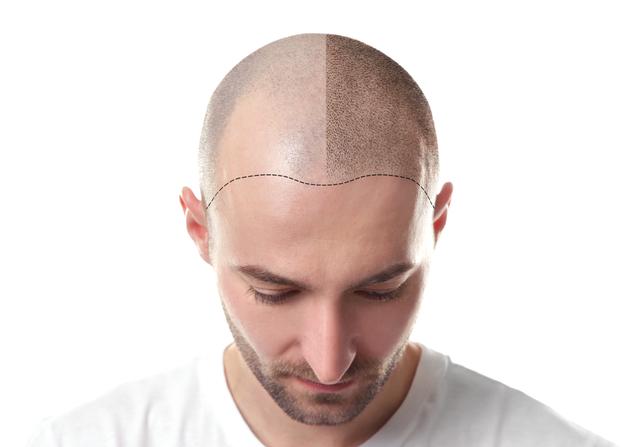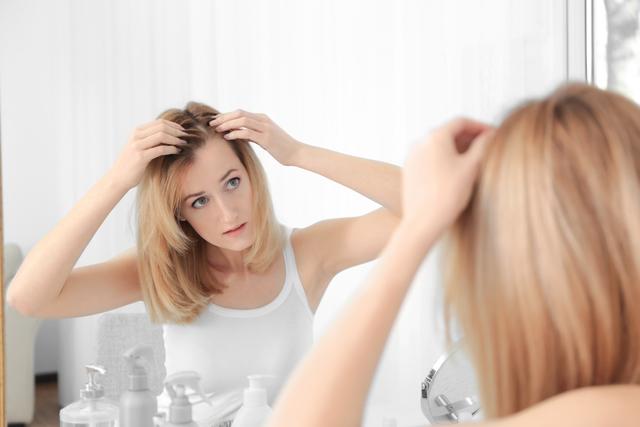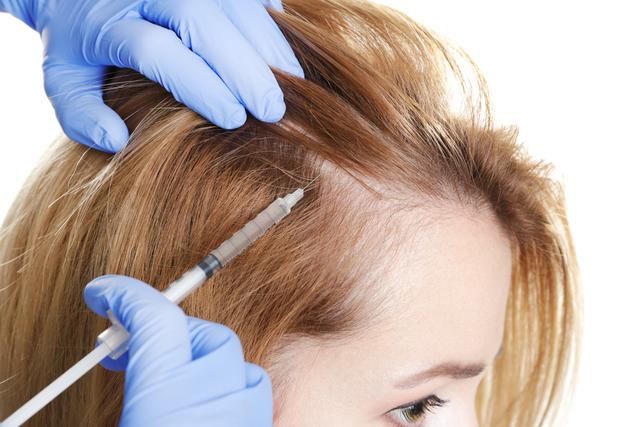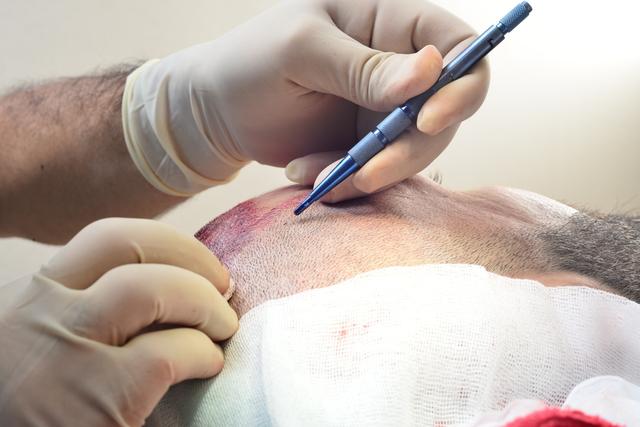
Androgenetic alopecia also called male pattern baldness is the most common cause of hair loss. It affects over 70% of men, and although we rarely think about women when talking about it, it is also responsible for hair loss in nearly 40% of women. Today on our blog about what is androgenetic alopecia and how to deal with it effectively.
Androgenic, means what?
Androgenetic alopecia is the most common cause of hair loss, the problem occurs when our hair follicles overreact to androgens - male hormones. Dihydrotestosterone, a testosterone derivative, is responsible for the weakening of hair follicles and hair growth disorder. Acting on androgen receptors of the hair follicles, they lead to their miniaturization and, as a result, to significant weakening and hair loss. It is estimated that nearly 95% of all diagnosed cases of baldness are androgenetic alopecia.

Unwanted decline
There may be many causes of alopecia, it may be related to our lifestyle, poor diet, occur as a symptom of a disease, or a reaction to some medications. Predisposition to androgenetic alopecia, however, most often we receive inheritance from our loved ones. So if our parents and grandparents struggled with excessive hair loss, there is a high probability that the same problem will also affect us.
Male and female symptoms of androgenetic alopecia
Symptoms of male pattern baldness most often appear in very young 20-30 years old people, although it happens that they are already visible in adolescents. In the case of men, we can easily see the shifting of the hairline. We see their forehead getting higher and so-called bend. This is not the end of the hair, however, also begin to thin on top of the head, and then these areas merge into one substantial "baldness".
In women, the first symptoms may appear, as in the case of men, in very young girls, most often thinning hair and pronounced weakness are visible. Women notice the so-called lumens and widening and irregular parting in the middle of the head.

How to deal with it?
First of all, it is important to make the correct diagnosis, although androgenetic alopecia is the most common cause of hair loss, but unfortunately there are others.
Therefore, although its symptoms are quite characteristic (especially in men), if we notice that there is less and less hair on our head, it is worth first to see a specialist. If it turns out that we are dealing with androgenetic alopecia and we will be prescribed pharmacological therapy, we should remember that it should always be carried out under the constant supervision of a specialist.
There are two prescription medicines available on the market. One of them stimulates hair growth by widening the scalp blood vessels (thanks to which hair follicles get more nutrients). The second, however, inhibits the production of DHT (5-α-dihydrotestosterone), limiting the miniaturization of hair follicles and inhibiting the baldness process. Importantly, this drug can only be used by men.
Help in the hands of a specialist
Aesthetic medicine treatments are also a very good method of dealing with androgenetic alopecia, which are highly effective regardless of the patient's gender.
Mesotherapy and PRP
Scalp mesotherapy is a treatment during which nutrients are administered directly into the scalp that cause new, stronger hair to grow, and inhibit their dying and falling out. Injecting the scalp with platelet rich plasma obtained by centrifuging the patient's previously collected blood also has excellent effects. Platelet rich plasma separated in this way is a preparation containing active thrombocytes, releasing growth factors which strengthens the hair extremely effectively, but also reduces hair loss and stimulates the growth of new ones that are much stronger.

And if the hair has already fallen out?
If baldness has already appeared on your head, and your dream is to regain the lush hair, the modern FUE transplantation method (folliculat unit extraction) is an effective solution. The treatment allows the collection of individual hair follicles without the use of a scalpel, the follicles are taken with a tool with a diameter of 0.8 to 1.0 mm and implanted in a place that requires reconstruction. The use of such small blades makes the treatment very invasive and, unlike older hair transplant methods, it leaves no visible traces of the surgery.

Beloved today, baldness can be managed effectively if excessive hair loss is the cause of your complexes and leads to increasing psychological problems, or you just want to enjoy a lush mane again, it is worth consulting a specialist and finding the best solution for you together.
Combination therapy for hair loss is important for the success of treatment of male and female to achieve hair regrowth without surgery.
REVIVE CLINIC™ offers HAIR REVIVE LIFT™ - the best Hair Loss programs, based on Dr Chris Gojdz years of experience in treating hair loss for both men and women.
Hair Loss Treatment Options Include:
- Hair Loss Mesotherapy
- PRP Hair Loss
- LED Hair Loss Therapy
- Hair “Botox”
- Vitamins IV Therapy for Hair Loss
- Drug Therapy
This can sound overwhelming however, not all this is done in one visit. This is a gradual process that takes time but at REVIVE CLINIC™ we will be here to help guide you every step of the way with your own personalized treatment plan!
